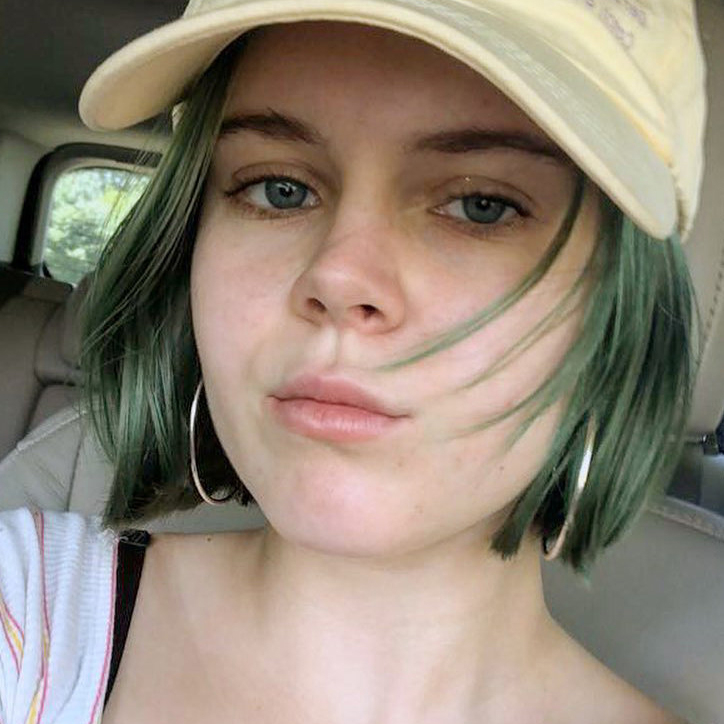On the evening of December 11, Tessa Majors, a freshman at Barnard College in New York, was fatally attacked by three young boys, all between the ages of 13 and 14, in Morningside Park, just steps away from the campus of Columbia University on Manhattan’s Upper West Side.
You might think that if there was one thing that could unite people in our polarized age it would be the murder of an 18-year-old girl. Surely everyone would want to know the exact time the murder occurred. They would want to know where she was, why she was there, and what she had been doing before she arrived there. They would want the murderer or murderers to be caught as quickly as possible, and they would want them to be tried and sentenced accordingly. They might also want to know about what measures were or were not taken to protect the murdered girl by whatever authorities had been entrusted with her care.
But these are not ordinary times.
Two days after Majors’s murder, New York City councilman Mark Levine, who represents the district where the crime occurred, told The New York Times, “You now have families on both sides of this horrific crime who are facing devastating loss.” It was a strangely tin-eared thing to say, but also a preview of things to come.
The 13-year-old suspect is scheduled to stand trial for felony murder in family court on March 16, after two weeks of pre-trial hearings on the admissibility of evidence. After a grand jury was convened just over two weeks ago, one of the 14-year-old boys was indicted; he was arrested late Friday night and charged as an adult with several counts each of second-degree murder and robbery. The other 14-year-old remains free. And the simple, elementary facts of the murder remain obscure.
“You now have families on both sides of this horrific crime who are facing devastating loss.”
From the beginning, the investigators worked in the shadow of another case from 30 years ago. “The discussion was, we have to be very careful, not rush to judgment, because it’s absolutely going to be compared to the Central Park Five,” a top police official told The New York Times, referring to the group of black and Hispanic boys who were wrongly convicted in 1990 of rape and attempted murder, and who served 7 to 14 years in prison before having the convictions vacated by a judge.
The case, which served as the subject of a 2012 Ken Burns documentary and a 2019 Netflix mini-series directed by Ava DuVernay, is rightly notorious not just for the alleged police and prosecutorial misconduct but also for the full-page ads Donald Trump took out in four local newspapers less than two weeks after the attack, in which he urged that the death penalty be reinstated and added that “I want to hate these murderers and I always will.” Trump, I hardly need add, has never apologized or backed down—not even in the face of a confession from the actual rapist corroborated by DNA evidence.
We know that Majors bit down hard on the finger of one of the three boys who had attacked her, and that one of the boys stabbed her so hard with a knife that feathers flew out of her down jacket. All the other principal aspects of the murder—why Majors was there, where she was going, what time she was killed, who found her bleeding on the street, what time she arrived at the hospital, who killed her—these simple, discoverable facts, some of them so elementary and accessible that an amateur sleuth could unearth them, remain hidden and unrevealed.
One of the boys, the 13-year-old, has been charged with felony murder—meaning that he is accused of committing the robbery (which is a felony) that led to the murder, but not of the murder itself. The boy remains in custody, in a city juvenile-detention center. He told police that the other two boys grabbed Majors from behind, and that one of them then stabbed her with the knife. A confession like that—scrupulously recorded by the police in the presence of the boy’s lawyer—is just what the cops hope for in such a case.

They questioned one of the 14-year-old suspects with his lawyer present, then left without charging him. The other 14-year-old was asked by police to come to the precinct house to be interviewed, but while he was being driven there by a family member, he reportedly jumped out of the car and fled. After what was described as an intense manhunt, during which the boy was thought to be hiding with relatives in the South, he was found two weeks later at the home of another family member in the Bronx. Questioned by police, also with his lawyer present, he invoked his right to remain silent, and as with the other suspect, the police released him without filing charges. They later said that they thought he had hidden out for two weeks so that the finger Majors had bitten would have time to heal, thus erasing any possible DNA evidence.
The Tessa Majors case went cold, at least in the media. There was hardly any follow-up coverage of the killing for almost a month. Although the N.Y.P.D. tested clothes, skin, saliva, and blood, and a knife found at the scene, they have not said a word about the results, and no one has publicly asked.
For months, the press was focused elsewhere. Four weeks after the murder, Jennifer Finney Boylan, a New York Times contributing opinion writer and Barnard professor, wrote a column entitled “Tessa Majors and the Worst Thing I Ever Heard,” in which she recounted her reaction when she listened to one of several racist robocalls about the murder left by a white-supremacist group on a number of Barnard-faculty voice mails. You could be forgiven for thinking that an even worse thing to hear might be “A student has been killed.”
The Tessa Majors case went cold, at least in the media.
Boylan went on to inveigh against hatred in general, recalling her experience facing hostility as an advocate of progressive causes, and in an odd non sequitur wrote: “I did not know Ms. Majors, but I’m proud to be a teacher at Barnard.” In a different time, a socially conscious writer like Ms. Boylan might have held the university to account.
Majors had staggered toward a Columbia University security booth before she fell to the sidewalk, and there have been conflicting reports about whether the guard who was stationed there was at his or her post. Columbia—which is separate from, but academically intertwined with Barnard—released a statement saying that the guard was inside the booth when Majors collapsed. In the Times’s version, it was not until “sometime later” that “a campus security guard found her bleeding to death.” The guard, who called 911 upon seeing the fatally wounded girl, has yet to speak to the media, or even to be identified.
As an adjunct lecturer in Columbia’s graduate writing program—where the professors I know were uniformly heartbroken by Majors’s murder—I receive what is known as Clery Act Reports. These are federally mandated alerts that a college or university must send to all the members of its community, notifying them of crimes that have been committed within a certain radius of the school. Though Morningside Park is just steps away from the edge of Columbia’s campus, I have not, in the three years I have been receiving the reports, gotten a single one about a crime committed in Morningside Park. Yet according to N.Y.P.D. crime statistics obtained by NBC News, Morningside Park has the highest rate of robberies of any park in the city—a fact that, until Majors’s killing, was unpublicized and thus not readily available to, say, anyone considering attending the $60,000-a-year school.
Six weeks after Majors’s murder, a curious letter appeared in the Columbia Spectator, signed by the executive board of the Women of Color Pre-Law Society. After referencing the Central Park Five case, the signatories argued that “justice must include actively interrogating and correcting the roots and effects of institutional oppression, gentrification, poverty, and other structural forces.” Getting to the root causes of injustice is necessary and vital, but surely not a task that makes solving the murder any less urgent. It is also not the job of the police. The letter expressed concern that “Morningside Park … has been labeled as dangerous.” Whether it is, in fact, dangerous went unmentioned.
Morningside Park has the highest rate of robberies of any park in the city—a fact that, until Majors’s killing, was unpublicized.
That is not to say that the letter’s fears were all unfounded. Predictably, Tessa Majors’s murder was seized on in other quarters as proof that the city was returning to the lawlessness of yore. The New York Post immediately proclaimed an “advancing tide of predation,” citing a rising murder rate—319 last year; up slightly from 2018’s 289, but still well below the peak of 2,262, in 1990—and dismissing otherwise reassuring official city crime statistics as Mayor Bill de Blasio’s “eagerness to cook the books.” At one point, keen to accuse de Blasio of being soft on crime because he loosened marijuana laws, Sergeants Benevolent Association president Ed Mullins claimed that Majors had gone to Morningside to buy pot, a baseless assertion that he later had to publicly apologize for.
Belatedly—but better late than never—the city has now implemented round-the-clock police patrols of Morningside Park and installed high-powered lights and security cameras, and various New York politicians and citizens’ groups have sensibly called for more social workers in schools and more after-school programs.
Tessa Majors, as it happened, had lived with her parents in Charlottesville, Virginia—site of the infamous alt-right rally which resulted in the killing of counter-protester Heather Heyer—before leaving for the boundless horizons of a big city. It is an indecent irony that her murder has been exploited with far more zeal than it has been investigated. But, then, when so much of what Americans used to consider ordinary decency and humanity has been redefined in the age of Trump, why should the response to the taking of a human life be any different?
Lee Siegel is a cultural critic and the author of several books, including The Draw: A Memoir


